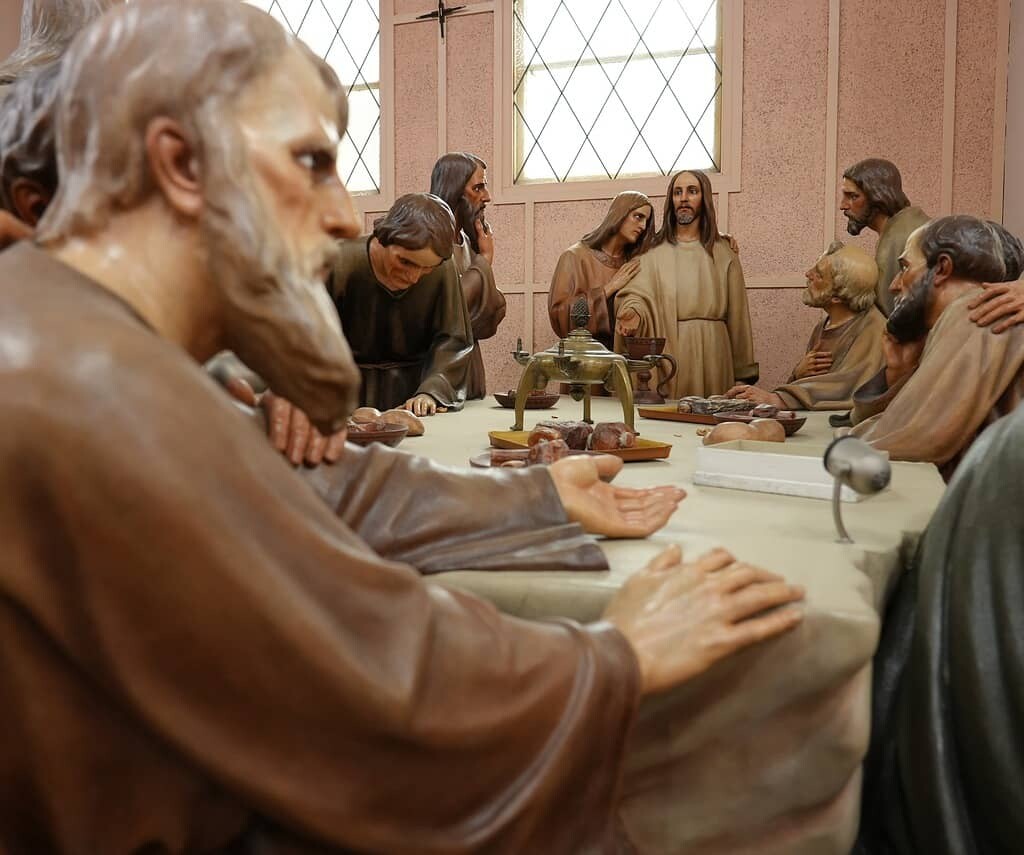In the heart of spring, Easter emerges as a time for pause and spiritual deepening. This period, marking an interlude for physical rest and spiritual reflection is deeply rooted in rituals commemorating the Passion of Christ.
Easter: The Depth of Its Rites
Easter emerges as one of the most emblematic times of the year, an interlude not only for rest and recreation, particularly towards coastal destinations favored by the spring weather, but as a period of deep spiritual reflection.
This break from work, closely linked with religious rituals, prompts the question: What is the underlying reason for this rest?
Known as the supreme commemoration within the Catholic faith, Easter unfolds starting with Palm Sunday, followed by the liturgical acts of Holy Thursday and Good Friday, culminating in Holy Saturday and Easter Sunday.
Beyond its festive character, this week embodies the passion, death, and resurrection of Jesus Christ, moments of immense theological significance.
This celebration, which varies annually following the lunar calendar — oscillating between March 22nd and April 25th —, aligns with the first Sunday after the full moon of the northern spring.
Beginning with Palm Sunday
This day marks the official start of Easter, commemorating the triumphant entry of Jesus into Jerusalem, greeted with joy by his followers. The tradition of carrying palms and olive branches, symbols of renewal and victory, precedes their use in the ceremonies of the following year’s Ash Wednesday.
Meaning of Fasting
The Easter fasting, practiced during Lent, embodies penance and spiritual introspection. The ecclesiastical norm establishes that this deprivation, allowing one main meal and two lighter ones, extends from age 14 to 59.
Abstinence from Meat
As an expression of personal sacrifice in memory of Jesus’ suffering, abstaining from meat—and other foods specified by ecclesiastical authorities—is observed especially on the Fridays of Lent, as dictated by the Code of Canon Law.
Symbolism of the Paschal Candle
Blessed at the Easter Vigil and lit to dispel the shadows of the night, the Paschal Candle represents the light of the resurrected Christ, a beacon of hope illuminating the darkness, symbolizing his continuous presence among the faithful.
Burning of Judas
This practice, rooted in Spanish tradition and extended to the Americas after the conquest, involves the creation and subsequent destruction of an effigy of Judas Iscariot on Easter Sunday, as a symbolic act of repudiation of Jesus’ betrayal.
This rite, laden with symbolism, offers a unique perspective on justice and redemption within the context of Easter.
Holy Thursday: Pilgrimage and Reflection
Holy Thursday stands out as a day of profound spirituality, in which the Christian faithful undertake the traditional pilgrimage to seven churches.
This practice evokes the painful journeys that Jesus Christ made from his arrest in the Garden of Gethsemane to his crucifixion at Golgotha. In places like Iztapalapa, in the heart of Mexico City, this custom is lived with special fervor, reflecting devotion and contemplation of the mysteries of faith.
Holy Saturday: Water Traditions
Holy Saturday, or Glory Saturday, is wrapped in curious traditions, among them, the custom of throwing water at passersby. This symbolic act has its roots in the ancient restriction against bathing during Holy Week, culminating on this day with a gesture of purification and renewal, marking the end of a wait and the prelude to the celebration of the Resurrection.
Easter Sunday: Joy and Color
The commemoration of Easter Sunday is lived with joyous splendor in various corners of the world, adopting multiple cultural expressions.
One of the most picturesque is the tradition of decorating and painting eggs in bright colors, which are shared or even thrown among participants, symbolizing Jesus’ victory over sin and death, a symbol of new life and renewed hope.
Easter: Origins and Meanings
The etymology of the word “Easter” takes us on a linguistic journey from ecclesiastical Latin “Pascha”, going even further back to Hebrew “Pesach“, meaning passage or transit.
The incorporation of the “u” in the Latin transliteration reflects an analogy with specific culinary practices of the time, particularly the consumption of a sheep’s head, a dish that evokes the passage from slavery to freedom, and in the Christian context, the transit from death to eternal life.
This intertwining of traditions highlights the richness and depth of the Easter legacy, uniting communities in reflection and celebration.
As we close Easter, we carry with us a deep reflection on the cycle of life, death, and resurrection. Each tradition and rite experienced during this holy week has allowed us to explore the deeper dimensions of our faith and humanity.
From the reflective silence of Good Friday to the joy of Easter Sunday, Easter leaves us a legacy of hope, rebirth, and unity. It is a testament to the power of faith and community to transcend time and renew the human spirit.





